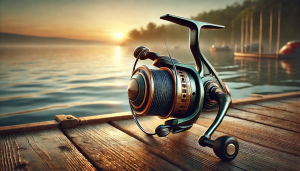Currently Empty: $0.00

Braided fishing line has become a go-to choice for many anglers due to its strength, sensitivity, and thin diameter. However, a common question that arises is, “How long does braided fishing line last?” Understanding the lifespan of braided line is crucial for ensuring peak performance on the water. In this post, we’ll explore the factors that affect the longevity of braided fishing line and provide tips on how to maximize its lifespan.
The Durability of Braided Fishing Line
Braided is known for its incredible durability. Unlike monofilament or fluorocarbon lines, braided line is made from woven fibers, usually polyethylene. This construction gives it superior resistance to abrasion and UV light, both of which are significant contributors to the degradation of fishing line. While monofilament line may need to be replaced every season, braided line can last several years with proper care.
Factors Affecting the Lifespan
The longevity of fishing line is influenced by several factors. Firstly, the frequency of use plays a significant role. An angler who fishes regularly in harsh conditions may find that their line shows signs of wear faster than someone who fishes occasionally in calm waters. Secondly, exposure to saltwater can also impact the lifespan of fishing line. While it is more resistant to saltwater than other types of line, prolonged exposure can still cause degradation over time.
How Long Does Braided Fishing Line Last on Average?
On average, braided fishing line can last anywhere from 2 to 4 years under normal conditions. However, with meticulous care and less frequent use, it is not uncommon for anglers to use the same braided fishing line for up to 5 years. The key is regular inspection and maintenance. Check your line for signs of fraying, discoloration, or loss of strength, and replace it as soon as these signs appear.
Tips for Maintenance
To maximize the lifespan of your line, proper maintenance is essential. After each fishing trip, especially in saltwater, rinse your line with fresh water to remove salt and debris. Store your reels in a cool, dry place, away from direct sunlight, which can weaken the fibers over time. Additionally, using a line conditioner can help keep the braided line supple and strong, reducing the likelihood of breakage.
When Should You Replace Your Line?
Even though braided line can last several years, it’s important to know when to replace it. Signs that it’s time to replace your braided line include noticeable fraying, a decrease in line strength, or if the line has lost its color. If you’re in doubt, it’s always better to replace the line than risk losing a catch due to a line failure. Regularly testing the line strength by pulling on it with force can help you determine if it’s still fit for use.
The Impact of Different Fishing Environments
The environment in which you fish can greatly impact the lifespan of your braided line. Fishing in rocky areas or around structures increases the chances of abrasion, which can weaken the line. On the other hand, fishing in open water where the line is less likely to come into contact with rough surfaces can prolong its life. Being mindful of the environment and adjusting your fishing techniques accordingly can help extend the lifespan of your fishing line.
Conclusion
In conclusion, the lifespan of braided fishing line is impressive compared to other types of fishing line, lasting anywhere from 2 to 5 years depending on various factors. Regular maintenance, careful storage, and awareness of the fishing environment are all crucial to extending the life of your braided line. By following these tips, you can ensure that your braided fishing line remains strong and reliable for as long as possible.


